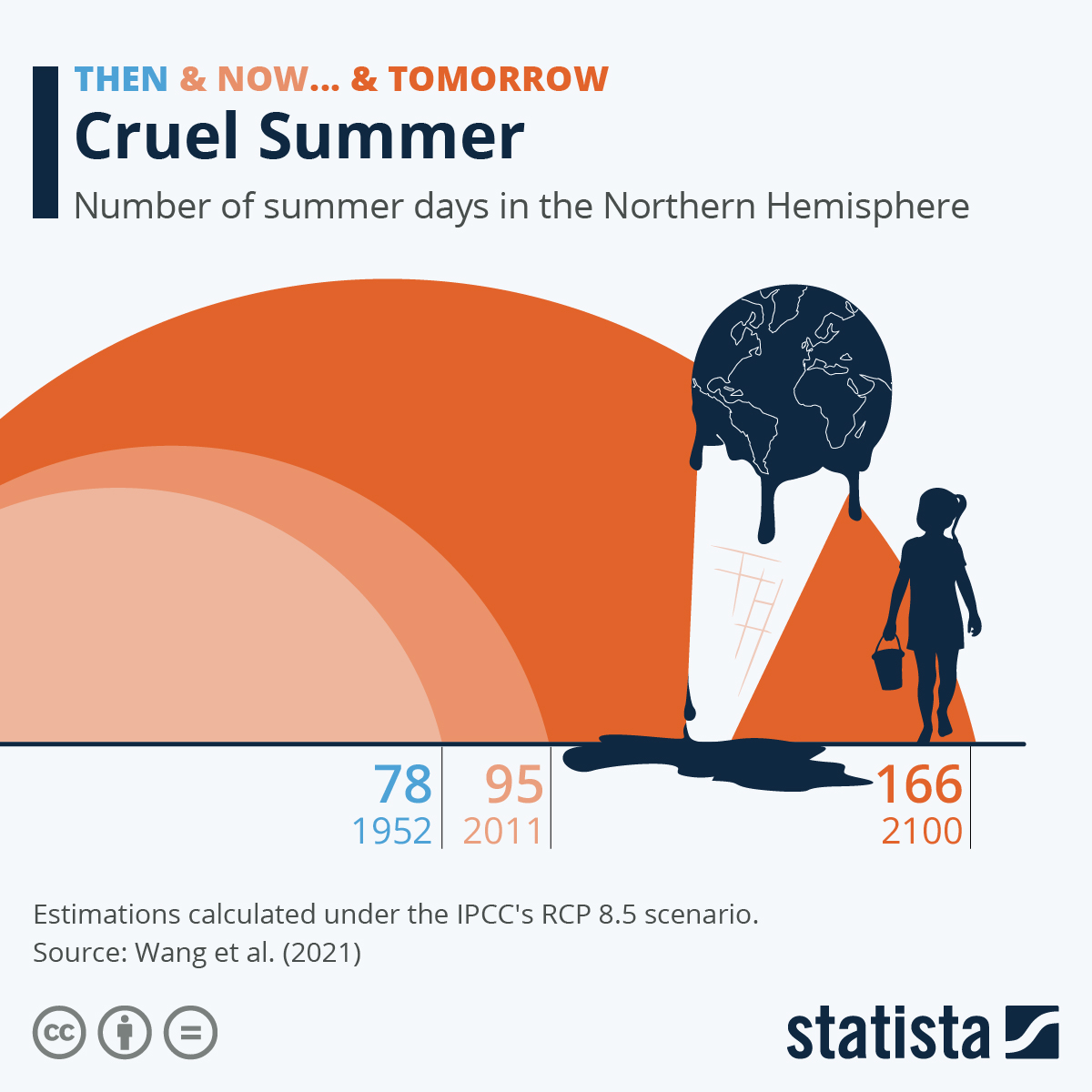If you've been having the impression that summers are getting longer and hotter because of the effects of global warming, you're not alone: the traditional four seasons have changed indeed.
In a recent study that examined how climate change is affecting the patterns and duration of the seasons in the Northern Hemisphere, scientists Wang et al. revealed that the average length of summer in Northern latitudes has already increased from 78 to 95 days between 1952 and 2011, while the length of winter has shrunk from 76 to 73 days.
The researchers defined the start of summer as the time when temperatures first surpassed the threshold set by the hottest 25 percent of days observed during the study period. Winters began when temperatures dipped into the coldest 25 percent of the period while spring and fall were defined as the transition periods between the two other seasons.
As our infographic from our series Then & Now (...& Tomorrow) shows, under the current business-as-usual scenario from the IPCC (RCP 8.5) - which forecasts that emissions will continue to rise throughout the 21st century - summer could even last for six months (166 days) by 2100.
And while longer summers might sound pleasant for sun lovers, even small seasonal shifts can throw off the balance of our ecosystem, for example negatively effecting crop production or increasing the occurrence of mosquito-borne diseases. Longer summers would also increase the length of heat waves and wildfires and would be a further source of air pollution. Overall, changing seasonal cycles have alarming impacts on the environment and human health.





















